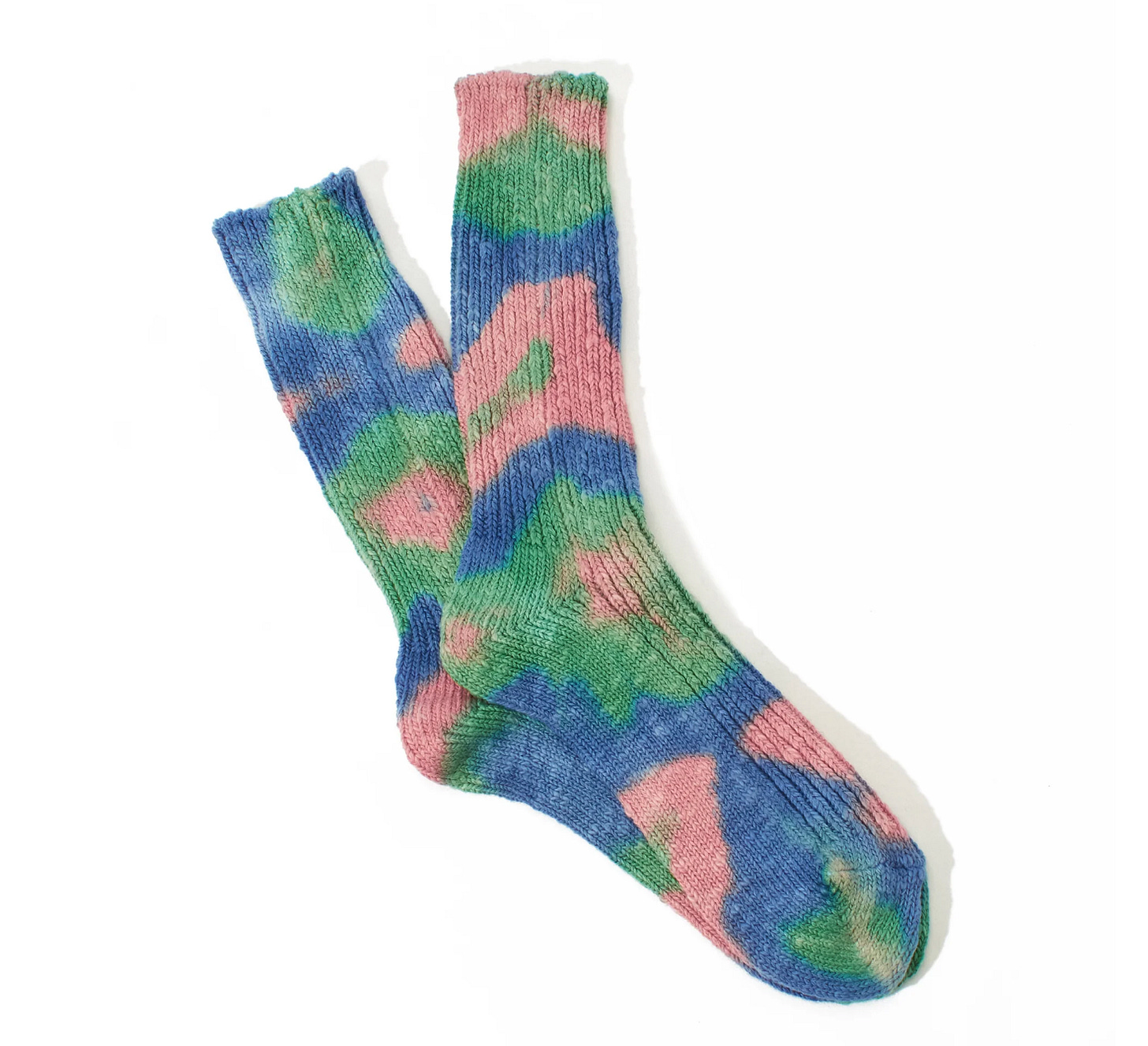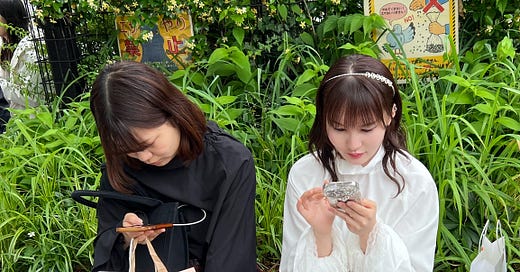34. Japanese style starts with socks
Spotting and shopping for footwear among Tokyo fashionistas in knee highs and geishas in white tabis.
I traveled to Japan expecting to see kimono-clad geishas and pagodas. I didn’t anticipate becoming fixated on people’s socks.
But rickshaw drivers in split-toed tabi socks with rubber soles pulled tourists around streets near Tokyo’s Senso-ji Shinto temple and chic women everywhere paired white lace socks with black platform sandals, a bold Goth-gone-sweet move. And on Omotesandō boulevard, Tokyo’s shop-stuffed Rodeo Drive, schoolgirls in outrageously scrunched white knee socks and short skirts jockeyed for sidewalk space with fashionistas in ruffled ankle socks and Onitsuka Tiger sneakers.
I started to worry that the Japanese, as polite and reserved as everyone said, were going to lock me up as a gaijin (foreigner) foot-fetishist. But it turns but the whole country is obsessed with where and how you wear socks, slippers, and shoes. I came home from my May trip with a half-dozen new pairs and a fascination with why so much Japanese style happens from the ankle down.
Shoes come off, socks stay on
“Wearing socks is ingrained in Japanese culture,” says Ashley Ogawa Clarke, a British-born, Tokyo-based fashion correspondent for Vogue and The Wall Street Journal. “There are so many situations where you must take your shoes off—to go inside homes, to walk on tatami mats inside restaurants or hotels, and even to enter dressing rooms at shops. You have to think what’s on your feet and to make sure your socks are presentable and neat.”
Businesses usually provide the slippers you slide your socked feet into when you deposit your outdoor shoes outside their doors. For example: a bamboo basket of worn leather slides sat at the entrance to the Japan Folk Crafts Museum in Tokyo. Visitors de-sneakered or de-loafered, then stuck their feet into the slippers to pad slowly around the traditional building’s weathered wood floors.
The guest rooms at the ryokans (hot-spring inns) on my hiking tour of Kyūshū came with cotton kimono called yukata—not bathrobes—plus geta (flip-flop-like thong sandals) and simpler tabi socks (no rubber soles). You wear this entire outfit to dinner at the inn. I felt very Shōgun-meets-The Tale of Genji since the yukata’s ankle-grazing length and the sandal-and-sock combo made me sway as I walked.
Pairing tabi socks with getas goes back 600 years in Japan, says Sheila Cliffe, a British-born, Japan-based fashion historian known as “Kimono Sheila.” “The tabis were usually white, which was a sign of wealth,” Cliffe says. “Poorer people couldn’t afford to keep pale colors clean or probably to buy socks in the first place.” Geishas still sport split-toed white socks with their chunky-soled okobo thong sandals, and white tabi are de rigeur for brides.

Explore the history of tabi, still made mostly in Japan on antique machines, at the Tabi and Lifestyle Museum in Gyoda. The longtime center of sock-making in Japan is about an hour-and-a-half drive northeast of Tokyo. Gyoda also holds Oshi Castle, an atmospheric, pagoda-like 15th-century castle plus sock shops, galleries, and restaurants located in 19th-century tabi warehouses.
Where to buy—and how to wear—Japanese socks
The Japanese respect tradition in both life and fashion. Women still wear kimono for formal occasions or fashion (see the outsize sections selling them at Kyoto boutiques and Tokyo department stores like Isetan and Takashimaya). Powered by the tabi industry, many sock brands still produce in Japan.
But sock stylings on the city streets step way beyond pristine white tabis and the inky socks of dark-suited salarymen. Particularly among women, there’s a sense that any sartorial rule Westerners ever toed—no white socks with black loafers, socks with open-toed shoes are tacky—was wrong or stuffy. “Sandals with socks are just part of the culture,” says Ogawa Clarke. “My Japanese wife, who is a stylist, brings homes what seems like a dozen pairs from Tabio [a Japanese sock maker] for photo shoots each month, which I often steal for myself.”
Shopping Tokyo’s stylish Daikanyama and Harajuku neighborhoods, I spyed lettuce-edged anklets with Mary Janes, tennis skirts and colorful knee-highs, and patterned socks peeking out from combat boots. Lace socks—tabi or otherwise—softened up tough sports sandals. Kawaii, the national obsession with cuteness, even trickles footward, with knee socks decked with small stuffed animals, Hello Kitty characters, or Pop Arty symbols.

Japanese people are endlessly politely, and they dress quietly yet stylishly in dark colors and often subtle shapes. But their socks speak loudly.
Japanese sock sourcebook

Below is a curated guide to buying Japanese socks both in country and online. Japan still has knitting machines and high production standards, so these may be the world’s best socks.
AnonymousIsm, men’s cotton or wool socks including tie-dyed crew styles and women’s pairs come with fringe or ruffle embellishments. Online and at Japanese boutiques and department stores.
Happy Socks, bright styles for adults and kids (Lichtenstein-ish Pop Art), Pride-worthy stripes, cartoon characters. Sold at Tokyo and New York City boutiques and online.

Muji, minimalist Japanese brand sells tabi socks and 10-toe socks. Sold at stores in Japan, New York City and online.
Onyva, punk princess tabi socks in glittery fabrics with faux pedicures, online and at Japanese department stores.
Rumi Rock, a design collective known for wild spins on kimono and other Japanese clothes offers tabi socks in wild fabrics such as metallic lamé. Sold online.

Tabio, Japanese sock maker bringing “zetsumyo” (subtle differences) that elevate its stylish tabi, 10-toed styles, and lace anklet socks. Sold online and at the brand’s stores around Japan
Yahae, minimalistic organic cotton socks in nubby textures plus some pairs infused with Japanese washi paper.









Love this deep dive into all of the sock trends!